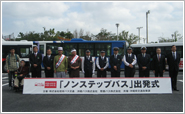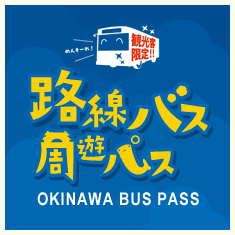History of Okinawa bus
1950's
(Showa25)
Okinawa Bus Ltd. was established after the publick bus was transferred to private bus.
Representative director Mr. Nakayama Ryosuke, 6 directors, 3 auditors, 95 stockholders, 119 employees.
The main office and repair garage at Asato in Mawashi son (Asato in Naha city at present).
Establishment of branch office at Naha, Kanzatobaru, Itoman, Ishikawa, Yakene, Motobu, Nakijin and Hentona.
Start of operation with 2 Bonnet-type buses are made by Isuzu and 12 GMC track.
(Showa26)
Establishment of Yomitan branch office
Establishment of Ga-bu branch office
(Showa28)
Establishment of Okinawa motor trade Ltd.
( Okinawa Fuso motor Ltd.)
(Showa29)
First introduction of rear engine bus
Temporary Naha bus terminal was established at Naha city hall at present
(Showa30)
Authorization of General Reserve Passenger Vehicle Transportation Business Cluase
(Showa31)
Start of operation for Southern Daily Tour
Start of operation for Central okinawa Daily Tour
Establishment of Ishikawa bus terminal and Yakena bus terminal
(Showa32)
Establishment of Kushi branch office
(Showa33)
Switching of currency from B Yen to dollor
(Showa34)
Establishment of Yomitan bus terminal
Establishment of Nago bus terminal
Establishment of Naha bus terminal
Establishment of Kushi bus terminal
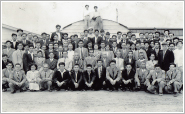
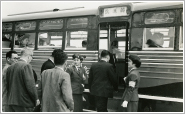
1960's
(Showa35)
Abolition of Ishikawa branch offise
Establishment of Tourist office
First introduction of tour bus with air conditioner
(Showa39)
Establishment of Oyakebaru branch office
(Showa40)
Abolition of Motobu and Nakijin branch office
(Showa41)
Hentone branch office abolished and transfer to public parking lot (Hentona bus terminal at present)
(Showa43)
Enforcement conductorless bus on Yomitan route. Enforcement conductorless bus on public route.
Establishment of Asahimachi repair garage
(Showa44)
Registration of the Domestioc Travel Agent
(The first number of registration of Okinawa Prefectural Governor)
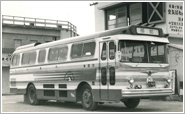
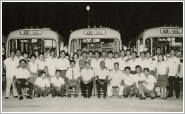
1970's
(Showa45)
Start of operation for Daily Tour D course
(Showa47)
Switching of currency Dollor to Yen with returning to the mainland
Transfer of Yakene bus terminal
(Showa48)
Start of operation for Daily Tour of Gyokusendo
(Showa50)
Start of operation for a through bus to Ocean Expo Park?
Enforcement conductorless bus on Izumi route, after that enforcement conductorless bus on all routes.
Transfer Itoman bus terminal (bus terminal at present)
(Showa51)
Close of operation for a through bus to Ocean Expo Park?
(Showa53)
Okinawa switched back from driving on the right-hand side of the road to the left by changing trafic method(730).
(Show54)
Establishment of Nago repair garage
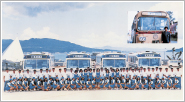
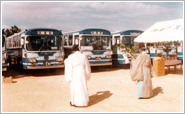
1980's
(Showa55)
Hold a cerebration of 30th anniversary of independence
(Showa58)
Transfer of Nago bus terminal (Nago bus terminal at present)
(Showa62)
Transfer of main office from Naha-shi Asato to Izumizaki
(Show63)
Start of operation for highway express bus between Naha airport to Nago
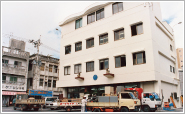
1990's
(Heisei 2)
Reconstruction of Asahimachi repair garage. Establishment of bus depot and tourist office
(Heisei 3)
Transfer of Tourist Department from Naha-shi Izumizaki to Asahimachi
Establishment of new main office
(Heisei 5)
Start of cooperate operation of Northern branch line and Ryukyu bus (Ryukyu bus transportation at present)
(Heisei 7)
Kushi branch office abolished and combine to Nago sales office (Nago branch office at present)
Establishment of Yakena Parking lot
(Heisei 8)
Start of cooperate operation of Itoman route, Yomitan route and Ryukyu bus (Ryukyu bus transportation at present)
(Heisei 11)
Transfer of Yakena bus terminal (Bus terminal at present)
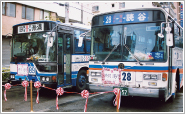
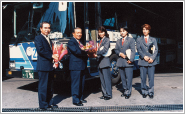
2000's
(Heisei 12)
Closeing of Yakena parking lot
(Heisei 16)
Introduction of low-floor bus which is called one-step bus.
Operation of a trial basis of community bus ar Shuri area
(Heisei 20)
Specified Worker Dispatching Undertaking
(Heisei21)
Start of operation for community bus (Otori bus) by commission of Yomitan
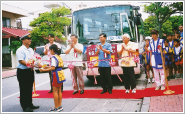
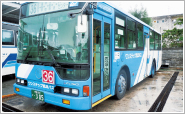
2010's
(Heisei 22)
Commemorative publication of 30th anniversary of independence
(Heisei 24)
Approval of “Chartered Bus Business Operator Safety Evaluation Permit System” of The Nihon Bus Assosiation.
(Heisei 25)
Introduction of low-floor bus which is called non-step bus.
